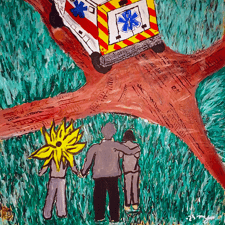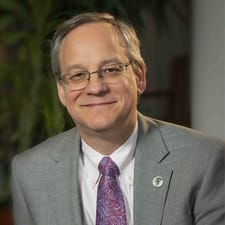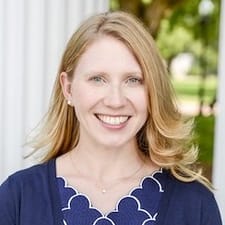We Have Never Been Neutral
Politics created community medical schools, and politics sustain them.
By Aron Sousa & Chelsea Wentworth
“Hope” by Courtney Jolliff (licensed for use).
In the 1960’s and 1970’s, a series of mostly public universities created new medical schools specifically to address physician shortfalls in their states. These new medical schools organized medical education sites in community hospitals to utilize community physicians as teachers of future doctors. While traditional medical schools centered on academic medical centers—primarily using their own academic physicians as teachers—in this new model, schools used hospitals and physicians previously untapped for medical education.
These new institutions came to be known as “community-based medical schools,” and the Association of American Medical Colleges (AAMC) defined this cohort of schools using five oft-cited criteria: “(1) initiated and accredited after 1960; (2) designed to use community hospitals rather than a specifically constructed university hospital; (3) established with the intent of using community physicians as the major teaching faculty (or with a small core of full-time faculty); (4) relatively small class size (usually 100 or fewer students [matriculating each year]); and (5) with a major mission of addressing regional manpower health needs.”
Although land grant universities were not the only institutions to form community medical schools during this period, for them it was a somewhat natural move. Land grant schools were, after all, created with the express intent of providing practical knowledge to the people of their states to meet their populations’ needs.
That said, creating one of these new medical schools was not an easy path. Competing universities and medical schools saw the new schools as potential competitors for their academic medical centers. Legislative politics were complex; the schools needed new and challenging funding structures and resource reallocation in order to support new, often rural teaching sites. The existing accreditation system did not recognize the curricular needs and opportunities in the communities, and community hospitals had long been (and often continue to be) derisively viewed as second-class institutions.
Still, the growing country needed more physicians, especially in underserved rural and urban communities. The belief was—and is now evidenced—that training medical students from and in underserved communities would lead to graduates practicing within these communities. At the start of the movement, women, rural, and other minoritized populations made up a disproportionately small percentage of physicians. Admissions committees paid special attention to applicants more likely to make their careers in underserved areas, which necessitated the creation of more diverse medical school classes.
Modern medicine started and continues from the premise that all people should have access to good health care and that there is special value in science-based care.
Just as the formation of community-based medical schools was taking off, in 1967 the University of Chicago’s Kalven Committee issued its “Report on the University’s Role in Political and Social Action.” Employing high-minded prose about knowledge and scholarship—written from an ivory tower in South Chicago—the report lacked any imagination of something like a community-based medical school: “To perform its mission in the society, a university must maintain an extraordinary environment of freedom of inquiry and maintain an independence from political fashions, passions, and pressures.”
But community-based medical education programs, like the land-grant institutions that are the homes for many of them, are products of “political fashions, passions, and pressures.” They view their communities as their primary constituents. The goal is not independence, as Kalven insists, but mutual dependency. The mission of community-based medical schools is to use the strengths of academic medicine to improve the lives and serve the people of their own communities. This is not a neutral proposition and has never been one.
In fact, we argue that medical schools in general and medicine as a profession have never been politically neutral and never could be. Modern medicine started and continues from the premise that all people should have access to good health care and that there is special value in science-based care. Just as universities start with a (political) belief that education is a fundamental good, schools that confer medical degrees start with the (political) belief that all patients deserve high-quality—scientific and humane—healthcare. Indeed, health is achieved through compassionate and quality healthcare; the act of providing care for a whole person, their family, and community is an inherently political act.
In promoting political neutrality in institutional statements, Kalven allows for exceptions when politics are germane to an institution’s core mission. But what isn’t political when it comes to health?
To use an example: One of our mothers (AS’s) spent her career as a sixth-grade educator teaching her students that “everything is political, right down to your earwax.” In a remarkable coincidence, she found herself, during a prolonged stay in Cambridge, England, needing obstructing earwax removed from her ear. The National Health Service provided same-day access and removed the impacted cerumen for free. Her medical and economic outcomes were the result of particular national politics.
Earwax, and everything else in health, has been and always will be political in valence. We can imagine freshman philosophy students trying to argue earwax is so banal as to be non-political. That holds only until they meet a person with Medicaid desperately trying to get impacted cerumen removed so they can keep functioning at their job.
Medical schools and medicine as a profession have mission-driven, non-neutral values around improving health and using science to achieve that improvement. Medical schools are the gateway to the profession, and so will inevitably promote values specifically in support of scientific medicine being humanely and justly delivered to individuals, families, and communities with growing attention to the imperative for quality public health.
For medical schools and the profession of medicine—and perhaps especially for community-based medical schools, which have been created explicitly to attend to healthcare disparities—there is nothing neutral about providing care, doing research, or educating students on the importance of wholesome water, reduction of violence, prevention of cancer, and the treatment of substance use disorders. This is value-dependent work which by definition never was and never can be neutral.
(Disclosure: Sousa is married to Alice Dreger, Managing Editor of inquisitive.)

